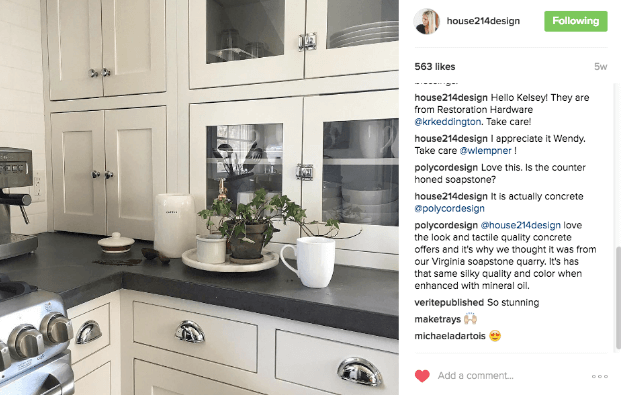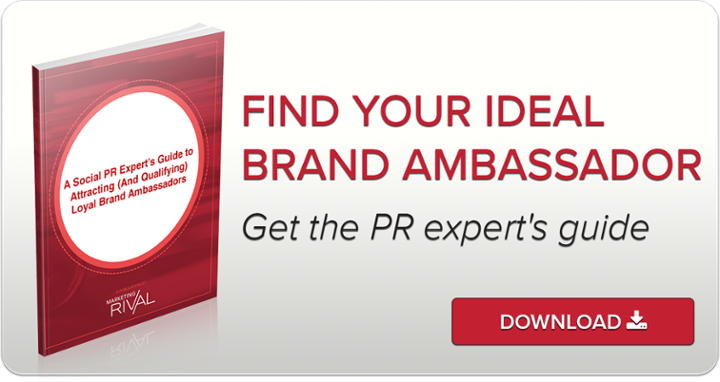Ten years ago my answer to the cocktail party question, “What do you do?” was as easy as two letters: PR.
These days that answer is: I help companies in the design and build industry connect with their targets through social media, content marketing, public relations and strategic partnerships (say that after two cocktails). The PR job has changed dramatically in the last decade. The press release, once king of the PR world, has ceded the throne to the much younger, much more persuasive heir, social media and her loyal advisor the brand ambassador.
2016 PR is social PR.
PR has always been about building relationships (with media and industry), but the scope has changed: The tools are better (thank you inbound marketing). The audiences bigger. And the opportunity for connections dizzying. At Marketing Rival the bulk of my work focuses on using the content we produce for clients to connect with and nurture leads with brand ambassadors, and I do it almost exclusively on social media. And it’s a lot more fun.
In this post I’ll use an example from one of our clients to show you how you can find and make meaningful connections with potential brand ambassadors to establish strategic brand partnerships.
Polycor is a mid-sized company which owns and operates natural stone quarries in the US and Canada Their customers are stone distributors, but to drive demand we spend most of our time talking to designers and architects who spec their material.
When we look for a brand ambassador/strategic marketing partner, we’re usually looking for a person (but sometimes a small brand like a boutique appliance company) to incorporate our material into their design and share it with their audience as part of a native ad or with the media (like a designer who frequently writes for Houzz or Dwell).
When I look for a brand ambassador I’ve got more in mind than follower counts. I want authentic coverage for my client that hits on a personal note with actual people. An ambassador for my clients (usually a design blogger) must write, curate and share content that is relatable, emotional, and personal. The right brand ambassador for my client is one that is just as concerned about delivering the right content for her audience as she is about doing good work for my client (and getting the check).
It’s not just about search and increasing web traffic. Brand ambassador relationships are about sales, and you increase sales when you connect with a person. I choose a media partner or brand ambassador based on their natural connection to my client’s product — in this case natural stone, like US marble.
I’m not just looking for a tear sheet of my client’s stone; I want coverage that’s woven into the partner’s life. (Don’t get me wrong, these are native ads, not free spotlights, but I want the blogger’s connection to my brand to be so personal that she might have done it for free.) In other words, we don’t want to force the content.
Instagram is the top channel for designers, and the Marketing Rival team spends a lot of time there following and engaging with designers about their work and their stone choices. That’s where I spotted designer Melinda McCoy from House 214, and her concrete kitchen counters. The dark color and texture reminded me of my client’s soapstone so I struck up a conversation with her.
As the relationship developed I got to know her style better and could see that she was actually a better fit for marble. I sent her a photograph of Polycor’s domestic marble called White Cherokee. This was her response: “I am excited to discuss a possible collaboration. I have been thinking of placing a slab of marble on my dining room table for over a year now, but haven’t found the right fit. When you sent the picture of that kitchen I thought, that is it!”

We look for someone who loves natural stone, wants to feature Polycor prominently in one of their designs, and considers the value of the materials we give as a sizable part of the project fee. Generally this is a design savvy blogger who loves natural materials, has a chic, well written site, and a following.
Our client is an established company but newer to marketing, so we’re open to bloggers with smaller followings and smaller rates because it allows us to grow together. A designer like this has a built-in audience of like-minded shoppers and we can count on them to provide beautiful images, great copy and good traffic back to our site.
We won’t work with someone who favors manmade materials like quartz and porcelain over natural stone. And we won’t pursue a relationship with a blogger who’s writing only about food or pets or fashion. Our native advertising must make sense with the platform — an interior home design blog for instance — and be appealing to the audience who wants to read about design trends and materials.
The most effective way to attract loyal, connected brand ambassadors is to employ those solid inbound marketing principals you’re already following: write great targeted content, publish and engage on social media, qualify and nurture leads.
When you cultivate an audience of people who genuinely love what you’re doing you’re building a pool of loyal, engaged brand ambassadors who will stick with you not just because you’ve contracted with them, but because they truly feel connected to your product and are honored to be associated with the brand.
A version of this blog was originally published on HubSpot: It’s Not About The Release Anymore. PR is Now Social PR.
Looking for some practical examples on finding and connecting with your ideal brand partner? Download the ebook: A Social PR Expert’s Guide to Attracting (And Qualifying) Loyal Brand Ambassadors With Social PR





Leave a Reply